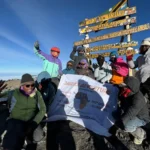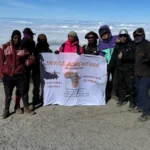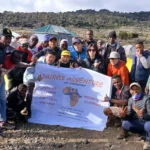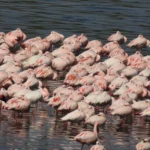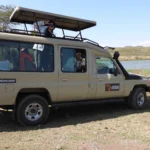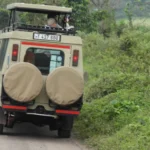MARANGU KILIMANJARO
Yah, this marangu kilimanjaro also called "Coca Cola Route" is the oldest and perhaps the best known trek route across Mount Kilimanjaro. It is the most well favored since it is the only mountain route that has hut accommodation for trekkers. This way, climbers get the full Kilimanjaro experience along with fabulous views and great hiking up the Uhuru Peak summit. However, it has some special features that set it apart from any of the other routes, giving it a character and feeling completely its own that is very much on the close side of variegation. Of the more interesting aspects of Marangu Route is that it is only route up Mount Kilimanjaro which does not allow camping; trekkers spend nights in permanent huts rather than tents.
Such dormitory-style shelters protect against winds and rains-even more so, they are widely preferred by tourists climbing during the rainy months of the year. These are found in: Mandara and Kibo Huts- 60 bunk beds each; Horombo Hut- 120 bunk beds due. The trekkers would spend the nights on bunked beds with a simple mattress and pillow at the huts. They are also able to buy a long list of candy bars, bottled water, and soft drinks. This is what mainly makes the Marangu route often called well known as the "Coca-Cola Route."
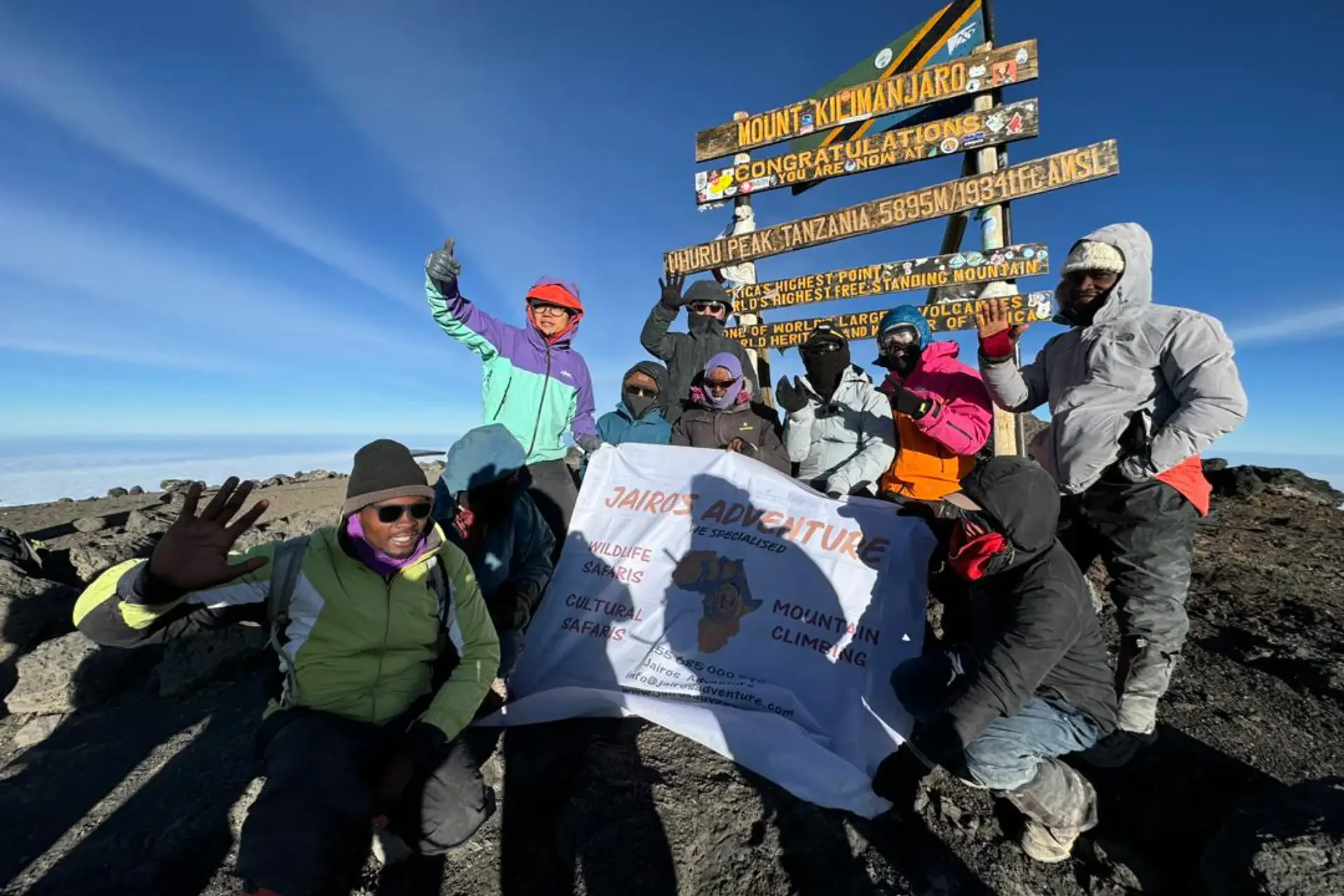
Marangu Kilimanjaro
This Marangu Kilimanjaro has been used for ages as the slow yet steady climb to each of its daily camps makes it known as the easiest trekking route in Kilimanjaro. However, do not underestimate this trail because the ascent to the last camp is physically arduous, with circa 1000 meters vertical altitude gain for that day alone.
Of course, summit day on Kilimanjaro is usually an arduous journey regardless of the way around it, making those last few steps to the top much sweeter. Certainly, being one of the shortest treks to the summit and taking only five days to reach Uhuru Peak, the Marangu Route is famous among trekkers with little time to climb.
Marangu Kilimanjaro Map
The disadvantage of this is that doesn’t allow a lot of time to adjust to the high altitude. On thiss, the Marangu track has the highest failure rate among other routes up Mount Kilimanjaro. Ensure you keep this in mind while choosing the route for Kilimanjaro trekking.
The only route which uses the same trails to go and return is the Marangu route. This means that trekkers will have to share the same views while going up and coming down because the trail is a narrow one. And because it has traffic going both directions, Marangu can also get overly crowded at times.
This is one of the best ways of doing Kilimanjaro the traditional way, and I have a hard time finding something that can compare.
Climbing Kilimanjaro offers Marangu as a private climb of five to six days. The five-day option does not have an acclimatization day on the third day at Horombo Hut.
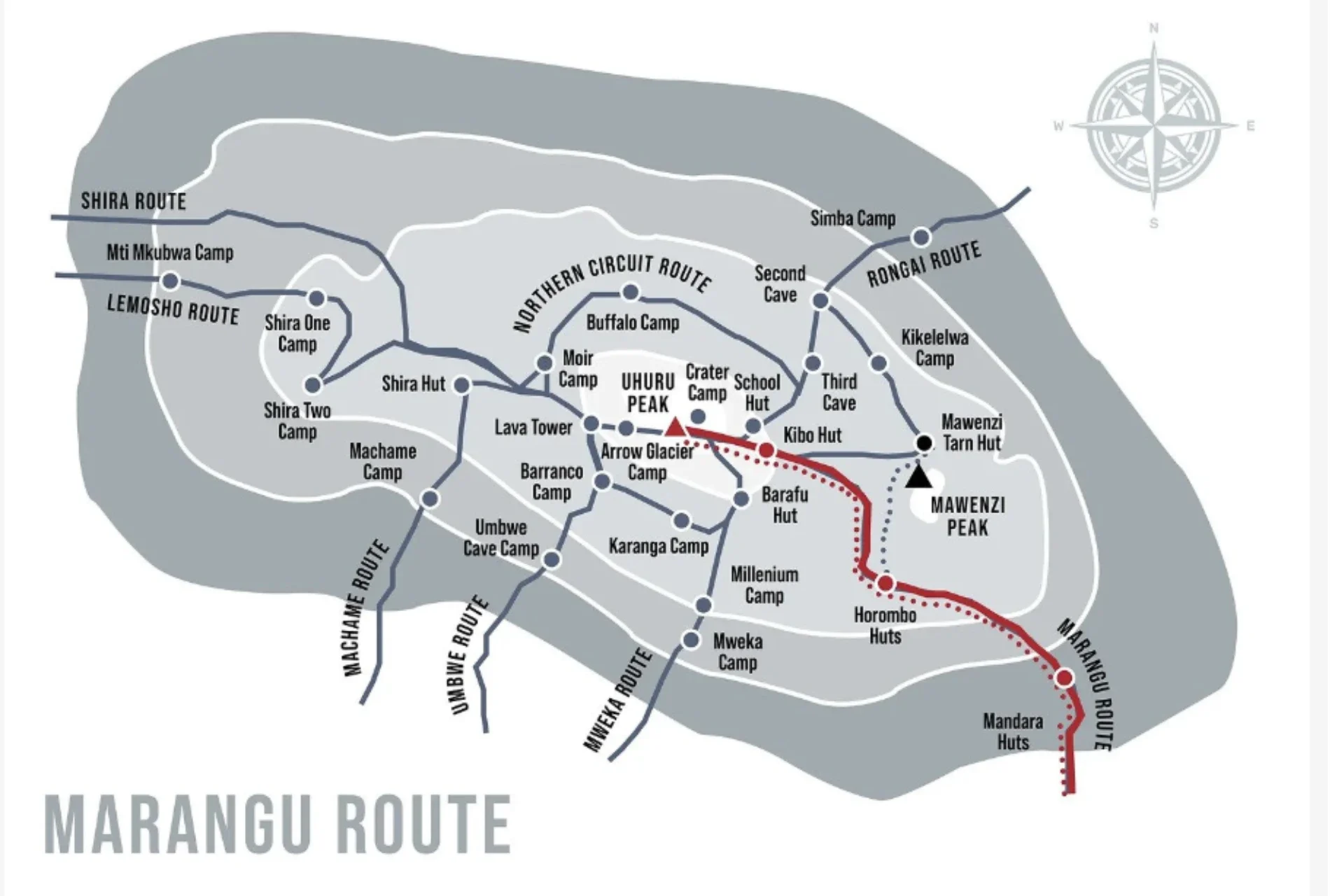
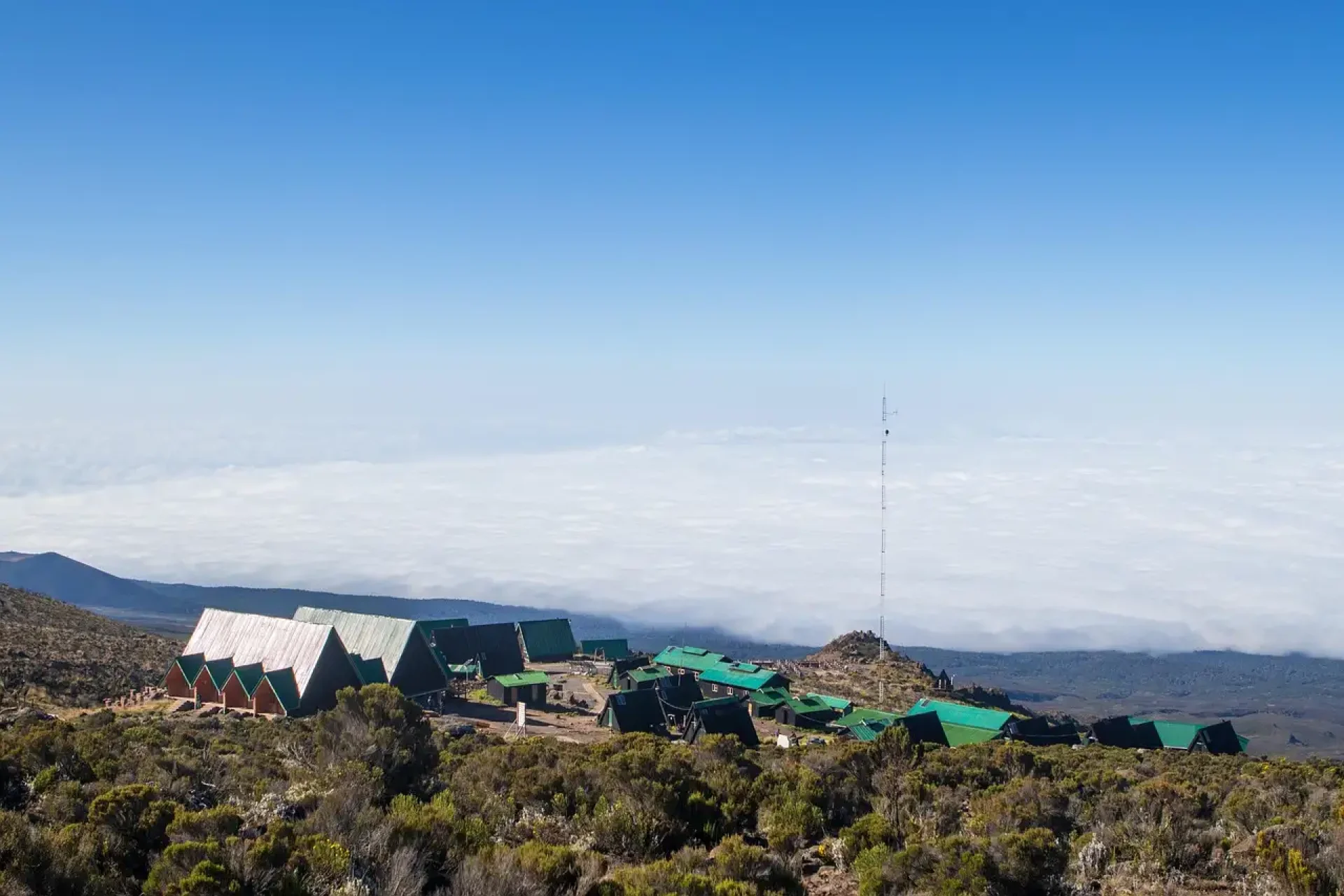
6 Days Marangu route
The top fronds fill up the foreground with tight trees against the crown of stone ash-colored mountains of Kilimanjaro in the backdrop, whose peaks are topped with snow. The journey takes one to the golden dunes of the desert and the soft beds of the ice fields before climbing the summit. Those landscapes, with their varying sceneries, are simply marvelous.
The preferred 6-day Marangu Route commonly used is indeed because of its clear-cut nature of the trail and gentle slope increase. Would you like to give up the comfort of sleeping in a bed? Fear not! It’s the only path that offers any accommodation-the Marangu route.
Sleeping huts, much like ones found in dormitories, have a sponge mattress and pillow in each bunk bed; also, bathrooms and running water are found at the lower huts. Kibo uses a basic latrine system and buckets of water are available. The 6-day Marangu Route is highly recommended by specialists for the extra acclimatization day. All hikers eat their breakfast and evening meals in a dining hut making this a very convivial and social environment.
5 Days Marangu route
The Marangu course is the least pricey of the summit routes. It happens to be the only course where there are sleeping huts in every campsite equipped with solar lights and nice beds.
Here, the huts are for communally and the bunks have sponge mattresses and pillows. Both Mandara and Kibo Huts have a capacity of 60 beds, while Horombo Hut can accommodate 120 persons. The bathrooms and running water are only available in the two lower huts. Mens’ and ladies’ latrines are available at the last camp but are very basic.
The climb groups dine deliciously in dining huts along these routes, bringing a delightful as well as lively atmosphere. Usually, this route is done in 5 days (this is the shortest route towards the summit), but it is possible to do this route in 6 days for better acclimatization. During this day, one can rest at Horombo or go up the small peak of Mawenzi.
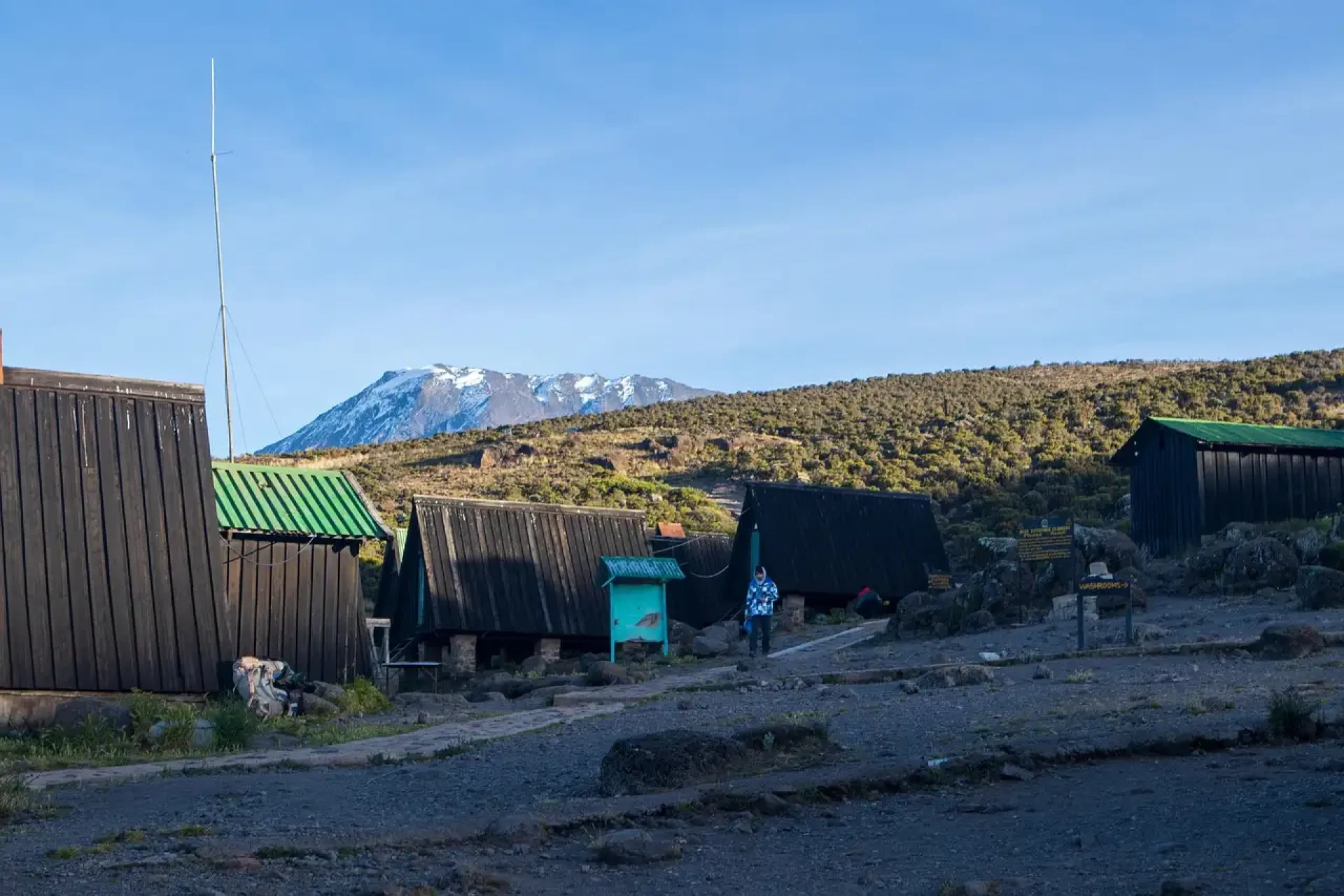
FAQ
How difficult is the Marangu Route?
Every year, this route has a lot of beginner hikers coming to it due to the nice sheltered huts, unlike other trails where one has to sleep in tented camps found in high places. Many people claim the route is less difficult than all the others leading to the top.
One of the biggest myths attached to the Marangu route is that trekkers consider the 5-day excursion as being easier than the 6-day excursion. However, the 5-day options can be excruciating because it offers very little time for altitude acclimatization.
The 6-day option is much easier, but a good level of fitness is still required.
What is the distance of the Marangu Route and how many days does it take?
Actual distance covered by Marangu Route is 82 km or 50 miles. Minimum duration for Marangu Route is 5 days, but including arrival and departure days, the total is 5-6 days. Being the shortest route on the mountain, Marangu is advised over 6 days to maximize one’s chances of success.
What is the Marangu Route Summit Success Rate?
Although the Marangu Route is arguably one of the shortest in the mountain, it actually boasts of being the lowest summit success rates. This mostly comes from the fact that local tour guides tend to be unprofessionally taking groups up the mountain on the shorter 5-day hike-for this, the average success rate on the 5-day is only 50%! We recommend to our hiker this fact, thus only take the 6-day option whose success rate sky-rocketed above 90%!
What is the Scenery like on the Marangu Route?
The Marangu route climbs through the rain forest, moorlands, and alpine areas before it falls in the glacial zone. This trek is very beautiful and is the only route that allows descent from it back the same way one has ascended.
Does Marangu route have showers?
Yes. Showers and flush toilets are available in some of the huts on the Marangu route. Mostly, the showers are cold and available at Mandara hut and Horombo hut.
When is the best time to Trek Marangu Route?
The most appropriate time of year to trek up Kilimanjaro is from July to September. The weather is well-suited at this time of year, and rain is less likely. Being very close to the equator, it is possible to climb the mountain at any time throughout the year. The only time when it becomes impossible is in April and May, as these are the wettest months of the year.
The Complete Kilimanjaro Packing List
In order to be safe and comfortable throughout your Mount Kilimanjaro climb, you’ll need to bring important gear and supplies with you. We have put together a comprehensive Kilimanjaro Packing list to help you prepare for your climb. Trekking Kilimanjaro involves five main climate zones, from the warm, humid forest and lower slopes, to the bitterly cold summit zone, with glaciers, ice, and snow. You need to be prepared for all Kilimanjaro weather conditions: sunny, windy, and rainy.
We provide tents, the camp equipment, food, cooking facilities, and other shared items. You’ll have a duffel bag with all your kit, carried by the porters; and carry your own daypack during the trekking day.
Download your printable Kilimanjaro packing checklist here
Climbing Kilimanjaro Information
Mount Kilimanjaro climbing is one of the ultimate accomplishments for both first-time and experienced climbers. Kilimanjaro has a range of different climates and you need to be equipped so that you are comfortable at the different altitudes.
As you ascend, Kilimanjaro weather gradually changes and gets colder and the increasingly thinner air can bring about altitude sickness. Altitude sickness is caused by the failure of the body to adapt quickly enough to the reduced level of oxygen in the air as one gains altitude.
While climbing you may experience different symptoms of mild altitude sickness, with the most common being headaches, light-headedness, nausea, sleeplessness loss of appetite, loss of balance, and dizziness. In most cases,se these ailments are controlled by taking painkillers such as Panadol or similar.
All climbers are advised to countercheck their body conditions, and should openly communicate with their Guides. Our experienced guides are all well trained in highly specialized First Responders Wilderness training and can spot acute mountain sickness. Unlike many operators, Jairos Adventure carries oxygen on all climbs and we perform daily health and pulse oximeter checks, which measure both your heart rate and the percentage of oxygen in your blood. We want to ensure and monitor your health and safety at all altitudes.
Except for the Marangu route where accommodation is in huts, you will be sleeping in tents every night, so it is important to have proper weather-rated sleeping bags and clothing.
The walking pace should be slow and steady. We recommend you take your time and walk slowly to give yourself the best chance of fully acclimatizing as well as reducing fatigue for the following days.
Minor altitude sickness on Kilimanjaro causes most climbers to experience a loss of appetite, however, it’s important to eat well and maintain your energy. Staying hydrated is essential drinking a minimum of 3 litres per day. We recommend reducing or eliminating your caffeine intake – as it has a diarrhetic effect which can cause dehydration.
Trekking high, and descending low is the best technique to help your body acclimatize. Our climbing itineraries have been prepared to follow this practice, giving you the best possible chance of success to reach the summit.
It is strongly recommended to not smoke or drink alcohol when climbing.
As always it’s best to seek a doctor’s advice before you travel and upon arrival at your briefing listen to your Guide’s advice. Many clients choose to take Diamox before attempting Kilimanjaro and report a noticeable increase in comfort and reduction of symptoms. This of course is an individual choice. You can easily purchase this medication at a local pharmacy for less than $5 for a week’s supply. We advise trying the medication before leaving for the climb to detect any possible adverse side effects. Numbing of fingers, cheeks, and toes is common.
Safety
It is absolutely vital that one stays well-fed during the climb particularly at times like this when the conditions do not make one want to eat or drink as much as they should. Because so many climbers face loss of appetite during altitudes, our head chef has devised special menu plans that are appetizing, healthy, and loaded with juices of energy necessary to get to the top. Meals, by default, have fresh fruits and vegetables every day. Fresh meat will be there at the beginning of the trek and on the southern route where it is possible; we resupply the team at Karanga Camp. As an extra treat after your summit ascent, we will be ready to have an “All Day Breakfast” when you return to Base Camp – just inform our cook how you’d like your eggs! And before you leave the mountain, you also get to sample some of the local Tanzanian cuisine such as Njegere and Machalari.
Food & drink
The entire day-by-day itinerary includes everything from hotel accommodation to meal basis. All pre-and-post climbing accommodation is in Moshi. We will have booked you a hotel in Arusha upon your arrival if you decide to go on safari before your climb so that your travel time gets shortened. Where you have a B&B basis, you could either purchase snacks or meals in the hotel, which can be paid in Tanzanian Shillings or many times in US Dollars. When you arrive at the hotel, take time to familiarize yourself with the layout and the procedures in case of fire, especially with your escape routes and fire exits.
Your meals will be taken in a separate mess tent where you will be able to sit comfortably, while you relax and chat with your teammates and enjoy the wholesome food that our cook has freshly prepared for you. Inside, you’ll be pleased to find a table (of course) and a proper, comfortable chair with arms. With a full 2 mmetersof headroom, even the tallest climbers will be able to stretch a bit and move about without hunching over. They are fully waterproof, and regularly withstand the worst weather Kilimanjaro has to offer. A toilet tent is provided with toilet paper.
We use only the very finest high-altitude mountain tents, Mountain Hardwear Trango 3, to ensure you stay warm, dry, and comfortable on your climb up Kilimanjaro. Keep in mind that these are mountain tents and are made for extreme conditions, so don’t expect to be walking around standing inside! The dry and dusty conditions we experience in Kilimanjaro create havoc on the zips and easily jam them. Our guides are armed with WD-40 so just ask them for assistance rather than trying to force the zip.
Accommodation
The entire day-by-day itinerary includes everything from hotel accommodation to meal basis. All pre-and-post climbing accommodation is in Moshi. We will have booked you a hotel in Arusha upon your arrival if you decide to go on safari before your climb so that your travel time gets shortened. Where you have a B&B basis, you could either purchase snacks or meals in the hotel, which can be paid in Tanzanian Shillings or many times in US Dollars. When you arrive at the hotel, take time to familiarize yourself with the layout and the procedures in case of fire, especially with your escape routes and fire exits.
Transport
Kilimanjaro National Park operates a strict limit of 20kg per porter in respect of carrying your main equipment bag. This limit also applies to your sleeping bag, even if rented from us. This is more than enough for your use while in the mountain. Your bag will be weighed before you leave the hotel to start the climb and if it is in excess you will have to take things out and leave them at the hotel. Additional porters can easily be hired but they cost $25 per day.
Luggage - Weight of Climbing Bags
This is a complete ban on all single-use plastic bags in Tanzania as of 1st June 2019. Join us in this fight against plastic by using more sustainable alternatives while coming down with your bag like packing cubes and dry bags. Passengers with carry-on luggage that include plastic bags may be required to surrender on arrival at the airport. The zip-lock bags used to carry liquids and toiletries in cabin baggage on airplanes will still be allowed, however.
Ban on Plastic Bags
Usually, climbers wanting to take on Kilimanjaro will fly to Kilimanjaro International Airport (JRO), and KLM offers a perfect flight from all the major UK airports, milling around many of the larger US international airports. However, in the UK flights leave for JRO early morning only, switching at Luchthaven Schiphol, Amsterdam’s main air hub, and arriving at JRO late that same evening.
Tradition has it that one starts all adventures on the majestic Mount Kilimanjaro from a town called Moshi. Moshi lies along the low slopes of Mount Kilimanjaro on the southern side at nearly an altitude of 1000 meters over sea level. It is only about 40 kilometers by road from Kilimanjaro International Airport and transport from there to your hotel is part of your trek. Therefore, travel is almost any time of the day or night and lasts approximately 45 minutes.
Another hotel option because it is Moshi; Moshi, however fills up quite fast during peak season and should be booked with us as early as possible. It is always wise to schedule an extra day to rest after a long flight to recharge you and your gear before going on the trek rather than starting early the next morning after your arrival.
Some climbers from the United Kingdom prefer flying into Nairobi through either Kenyan Airways or British Airways. These flights are only accessible and originate from Heathrow in London. When most climbers reach the Nairobi airport, they will usually book another flight to Kilimanjaro International Airport through Precision Air, Air Kenya, Air Tanzania, or even Ethiopian Airways.
Actually, we do not recommend flying through Nairobi because Nairobi Airport always proves to be very uncomfortable and, at times, the transfer times can be really long. It also has the tendency of being poor in baggage handling and delays in transferring luggage between flights.
Turkish Airlines, Air Emirates, and Qatar also fly into JRO now, but these flights often involve long delays and flights leaving late at night for UK travelers. However, climbers from the US usually report better service and experiences flying Turkish Airlines, Air Emirates, and Qatar, so we do recommend these flights departing from North America.
Vayama offers really good flights to East Africa, like Tanzania, Uganda, Kenya, or Zanzibar from JRO, and is a very good option if you want to spend some time in this lovely area before heading back home. Many travelers plan a holiday on the beach in exotic Zanzibar to relax after their climb. We believe that the best way to organize transport for that is by booking your return flight from Dar Es Salaam and then to Zanzibar on an internal flight, ultimately back to Dar Es Salaam for your flight home.
If you are changing or re-checking an airline at any airport on route, always leave a minimum of 3 hours between flights. This accounts for any delays on arrival, travel time across airports (this can often take longer than expected), and time to re-check baggage.
How do I get there?
At Jairos Adventures, we believe in helping our guests to make their travels greener. By 2025, all our travels will be carbon-neutral from the time our guests arrive in destination until the time we drop them off at the airport. Since we do not include flight travel in our trips, we are not including them in our offset calculations, so here is the calculator below for you to use for that purpose yourself.
Travelling Responsibly
Please read a little of our Kilimanjaro Training Guide without constraint and at whatever pace you find comfortable since it is full of important advice on how to physically prepare yourself for the climb.
Fitness and training
The Tanzanian Shilling is an isolated currency meaning that you will not be able to purchase it before you arrive. It is better if you travel with US Dollars as these are broadly acceptable. The US bills must be new (not older than 10 years), crisp, and not out-turn. If you want some local currency to buy snacks or drinks either at your hotel or on your way to the climb, we can organize and take you to an ATM or bank. Moreover, there is a currency exchange as you walk through the Baggage Collection area of the airport. However, if you want to rely on a credit or debit card for emergency funds, do not forget to tell your card issuer that you will be using it abroad, or you may find that it won’t work when you really need it.
Please keep in mind that not all hotels accept card payment, and you may need to withdraw cash from an ATM.
Budget & change
We Work with Kilimanjaro Porters Assistance Project. They recommend the following momentous tipping procedure. Just to give you some guideline figures, KPAP recommended tips for porters are 6-10 dollars per day per porter. For the other roles, we recommend $20 per day for guides, $12-15 per day for assistant guides, and $12-15 per day for cooks. This is for groups and not per climber. You will receive a copy of the recommendations as well as the estimated crew numbers for your group. Size can only be known on that day during the first day of the climb after weighing bags and equipment at the park gate. First camp will tell you the final number of crew and the position they will be on climb.
You might find it useful to know that some of the porters join the group for support during your summit attempt. This is another job the porters do to give you the best possible chance at reaching the summit. Please tip them directly for any assistance you receive. An extra tip of $20 would be our recommendation.
The last evening at the mountain will also serve as the great tipping event, where all the crew will celebrate with you. A representative from your group should say a few words of thanks, which will then be translated into Kiswahili by the lead guide.
Due to recent cases of theft on Kilimanjaro, we no longer recommend that clients carry cash with them during the climb, and so the actual tip money will be presented to you when you return to the hotel. Your group will each be supplied with a couple of envelopes in which tips can be put; there will be one envelope to be used for porters, and one separate envelope that you will be using to tip your lead guide, assistant guides and cook. A trip of three porter representatives will come to the hotel and receive the tip envelope on behalf of all porters and distribute the money themselves.











